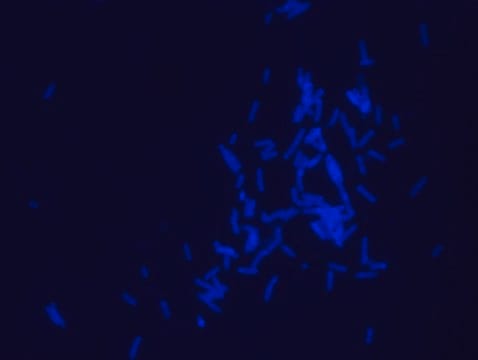G1424
Globomycin from Streptomyces hagronensis
Synonym(s):
Globomycin, Glycine, N-(N-(N-(N-(N-(3-hydroxy-2-methyl-1-oxononyl)-N-methylleucyl)-L-alloisoleucyl)-L-seryl)-L-allothreonyl)-, rho-lactone, SF 1902
About This Item
Recommended Products
biological source
Streptomyces hagronensis
Quality Level
Assay
≥98% (HPLC)
form
powder
color
white
solubility
DMSO: 1 mg/mL
antibiotic activity spectrum
Gram-negative bacteria
Mode of action
enzyme | inhibits
storage temp.
−20°C
−20°C
InChI
1S/C32H57N5O9/c1-9-11-12-13-14-24-20(6)32(45)37(8)23(15-18(3)4)29(42)35-26(19(5)10-2)31(44)34-22(17-38)28(41)36-27(21(7)39)30(43)33-16-25(40)46-24/h18-24,26-27,38-39H,9-17H2,1-8H3,(H,33,43)(H,34,44)(H,35,42)(H,36,41)
InChI key
VFGBXFZXJAWPOE-UHFFFAOYSA-N
Related Categories
General description
Application
- Globomycin, a new peptide antibiotic with spheroplast-forming activity. I. Taxonomy of producing organisms and fermentation.: This study explores the taxonomy of the producing organisms of Globomycin and details the fermentation processes involved. This antibiotic shows spheroplast-forming activity, indicating its potential application in targeting bacterial cell wall synthesis (Inukai et al., 1978).
Biochem/physiol Actions
Storage Class Code
11 - Combustible Solids
WGK
WGK 3
Flash Point(F)
Not applicable
Flash Point(C)
Not applicable
Certificates of Analysis (COA)
Search for Certificates of Analysis (COA) by entering the products Lot/Batch Number. Lot and Batch Numbers can be found on a product’s label following the words ‘Lot’ or ‘Batch’.
Already Own This Product?
Find documentation for the products that you have recently purchased in the Document Library.
Our team of scientists has experience in all areas of research including Life Science, Material Science, Chemical Synthesis, Chromatography, Analytical and many others.
Contact Technical Service






